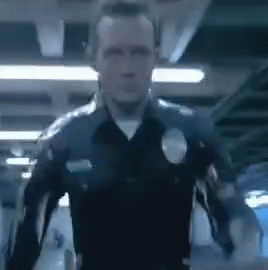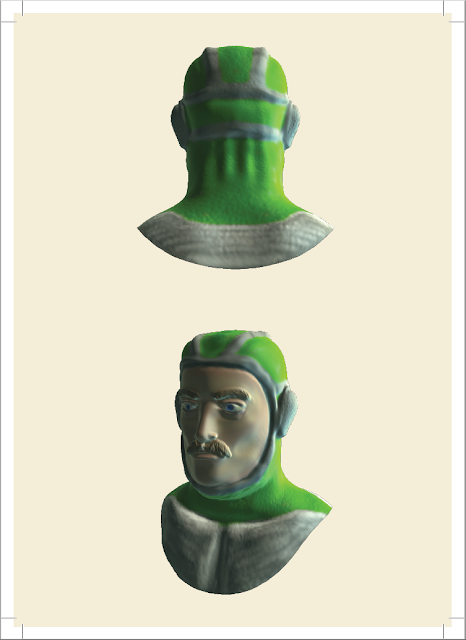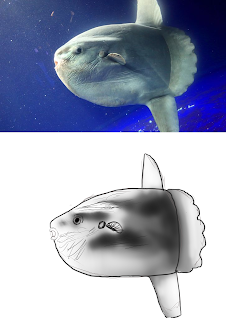This is a
literature review on Rod Serling’s The Twilight Zone. Specifically, the
story arc and narratology of the show. In this literature review, I will first
have to explain who Rod Serling is; so that you, the reader can understand what
this show is. Because you probably don’t know who Rod Serling is, you won’t understand
the show to what it’s supposed to be. I will explain what he is about, what his
creative flow is, and what he wants from the viewer. Then I will discuss the narratology
of The Twilight Zone. I will discuss some of the sources I have looked
at for this literature review to show you my understanding of narratology. Finally,
I will cover story arc. I will break it down for you. First, through the simple
structure of story arc. Then, through the 6 types of story arc. I will then discuss the three top episodes of
The Twilight Zone and fit them into the story arc categories.
To
understand The Twilight Zone, its narratology and story arc; one must
understand the producer and writer of the show, Rod Serling. Rod Serling was a
man who wanted to Illustrate political ideas using fantasy and the
supernatural. He was a student of Human Nature, (Feldman, 2010). According to
Marc Scott Zicree, author of A Detailed History of Rod Serling’s The
Twilight Zone. Serling’s creative urge was primarily a “Concern for people
and their problems”. He wanted to search for an emotional truth, to make some
attempt to make a statement of the human condition. (Wolfe, 1997). He
understood that we, The Human Race, often see things, and upon looking back,
were not there. An idealised past if you will. (Wissner, 2018). Zicree states
that Serling’s attitude was one of acceptance. So when Serling decided to make The
Twilight Zone, It wasn’t just made to make you go to the edge of your seat
or just have a casual viewing of a television show. Rod Serling wanted to make
a suggestion, whether it was to tell us to go forward in a new direction or
invoke an abiding truth. He wanted to evoke a second chance. Make us want
redemption of ourselves. Serling wanted to “Pull the heartstrings of the
viewers and intended for the show to prove that television could be
simultaneously entertaining” (Wissner, 2018). The stories Rod Serling wrote for
The Twilight Zone, and many other writers for the show, were about people
like us, the casual viewer, the everyday hard-working citizen, encountering
common problems who encounters fantasy, something out of the ordinary. Serling wrote that The Twilight Zone
is a series devoted to the stories of imagination, produced with care,
attention and regard for maturity (Kraszewski, 2010). From this we should
understand the next couple of paragraphs and the reasoning behind the narratology
and story arcs in The Twilight Zone.
According to
The Living Handbook of Narratology. Narratology is a “humanities
discipline dedicated to the study of the logic, principles and practices of
narrative representation.” (Meister, 2013) Narratology itself has developed
over time to be a variety of theories, concepts and analytic procedures. The
Living Handbook was talking about narratology in a wider spectrum. But the
point is that, or how I’m seeing it, is about how the narrative is made. Serling
wanted to experiment with a variety of narrative conventions and generic
identities, and with The Twilight Zone he was able to do so. When
advertising the show, a clock and eyeball, a mannequin, with Serling himself in
a sharp suit were advertised. These advertised the themes for the show, including
perception, alternative modes of time and reality and questions of what
constitutes as a good society. With the episode by episode basic Serling was
able to produce multiple stories, 156 episodes to be exact that covered an
entire range of topics including racism, communism consumerism and conformism.
(Kraszewski, 2010). There was a paper I read called Unnatural Narratives –
Unnatural Narratology, which could be an accurate description of The
Twilight Zone. In the paper, David Herman defines narrative as a “basic
human strategy for coming to terms with time, process and change” Which is
exactly what The Twilight Zone has to offer (Alber & Heinxe 2011).
See the episodes “Walking Distance” and “Time Enough at Last”
(Locifficier& Locifficier, 2003) which are solid examples of this
description, as the main characters must deal with time, process and change; both
in the literal sense. Going back to the paper Unnatural Narratives, the
paper explains that the word unnatural has negative connotations to it, and
indeed it does. But when we are talking about the narrative of The Twilight Zone,
we can use that word in its adjective form, not regular. Because in The
Twilight Zone every scenario presented in each episode is not regular. It’s
a twist on what could happen. Rod Serling’s favourite topics of exploration,
was nostalgia. A topic he quite regularly visited in the show. But with
visiting nostalgia he would like to demonstrate the implications and
consequences of having the opportunity, even spinning the nostalgia on its
head. (Wissner, 2018). If we fit this to the definition told prior, this could
be considered a practice of narrative representation.
There are
many ways story arc can be represented, there is your basic story arc, “The
Mountain of Storytelling” which is demonstrated in five stages.
First point:
You have the introduction, or exposition which is the beginning of the story where
you character is introduced along with the conflict.
Second
Point: The rising action, where the conflict is developed. Here we explain why
the conflict is important and how it affect the characters.
Third point:
The Climax, the top of our mountain of storytelling. This is where the turning
point of the story is, or where you character is forced to confront his issue.
Forth point:
The Falling action. This part of the story gives the reader a break from all
the intensity of the story and shows character development.
And then
there’s the Fifth point: The Resolution, where it all ends. (Wade, 2016).
Pretty simple to understand. But there are six different types of story arc
which a web article about data-mining western literature shows quite well.
They still
have the basic principles of storytelling, but these story arcs are based on
the highs and lows of the stories, the fortunes of the main character. And it
goes like this.
Story arc
one: “Rags to Riches”, when the story starts at a low point, but it gets
consistently better over time.
Story arc two: “Man in a Hole”, when fortunes
fall, but after the climax of the story the protagonist bounces back.
Story arc
three: “Cinderella”, when the story starts with a rise in fortune but then has
a setback but follows with a happy ending.
Story arc
four: “Tragedy” or otherwise know as “Riches to Rags”, when the story gets
consistently worse.
Story arc
five: “Oedipus”, when bad luck strikes, followed by good fortune, then ends in
a final fall.
Lastly, story
arc six: “Icarus”, when the story opens with good fortune, but the protagonist
Is doomed to fail. (Scharping, 2016).
In the paper
The Screenplay and the spectator: Exploring audience identification in
Narrative Structures, its identified that characters have a ‘want’ and
‘need’, which is a common trope in storytelling. This want and need can affect
the story arc which also affects the audience as they follow with this want and
need. (Finnegen, 2016). In the paper Storytelling as a theory-building
activity, the paper recognises the different points of views adopted by the
story’s protagonist and narrators. The paper also recognises to see “one’s own
and others’ stories as possible ‘versions’ or ‘theories’” of what happens in
the story, recognising different story arc within the text or visual. (Ochs
& Taylor & Rudolph). With all this information now currently explained.
We can now look back at The Twilight Zone and show you how the shows
story arc works. For this I picked three top tier episodes which have been
crossed checked with multiple top Twilight zone episode webpages for this
explanation. We have ‘Walking Distance’ (Serling & Stevens, 1959), ‘Time
Enough at Last’ (Serling & Braham, 1959) and ‘The Monsters are Due
on Maple Street’ (Serling & Wilson, 1960). All written and produced by
Rob Serling. ‘Walking Distance’ and ‘Time Enough at Last’ Feature
one protagonist, Martin Slone and Henry Beamis respectively, while ‘The
Monsters are Due on Maple Street” have an entire town as the protagonists.
At the start of the episode while Rod Serling narrates over top with his
introduction to the characters, they are all doing something that is considered
normal. Mr Beamis is working as a bank teller. Mr Slone’s is having a Sunday
drive and the neighbourhood of Maple Street are just doing everyday live
things. But they all have hit a bit of bad luck at the start of the episode, Mr
Beamis isn’t too well at his job and get caught reading books on the job. Mr
Slone’s car need to get serviced, and a large shadow, along with a loud noise
is heard over the town of Maple street which leads into all the power getting
shut off, including the cars. This is where the story arc starts to split but
they all end up in a similar way. Mr Slone realises that he is a walking
distance away from his hometown and goes to visit it, while pondering
nostalgia. He goes to the local drug store to get an ice cream soda pop, but it
odd as the price for it is a dime, which is unusual for the time. As he is
looking around the town a bit more, he finds the younger version of himself
carving his name on a bandstand, then goes to his parent’s house and finds his
parents there. He realises that the year has changed back in time to 1934. He
is confused and worried. Mr Beamis after his rough day at work goes home to
read a newspaper, but his wife walks in and takes it off him, not only that, it
turns out that she has inked out all his poetry in one of his books. She the
proceeds to rip the book apart. Mr Beamis goes to work the next day and has his
lunch break in the bank vault where he glimpses over a newspaper that tells of
the H-bomb. Then a loud explosion is heard, the vault shakes. Mr Beamis goes
outside only to find rubble; He explores the land he once calls home only to
find there is nothing. The people of Maple Street, try and figure out what is
wrong with the power and the cars, and a local kid warns the locals not to
leave as apparently, it’s a sign of an alien invasion, People don’t believe him
until one of the locals vehicles starts up randomly, then people start getting
suspicious of each other. As we can see currently, we have covered half of the stories,
but the style of story arc stays the same for the first half. A stroke of bad
luck leads to something a little worse. You could say that this is looking like
a “Tragedy” or and “Oedipus” story arc, let’s keep exploring. So back to Mr
Slone, He goes to his parents and tries to convince them that he is their son,
they don’t believe him, he is turned away. He finds himself at a carousel and
tries to get his attention, he scares his younger self and makes him fall off,
he ends up having a limp and changes history a tiny bit. But his dad finds the
current version of himself, saying that he believes that he is his son. He
tells him that he should stop looking at the past and look ahead, as there are
perks being an adult. Mr Slone walks back to the store and its 1959 again. He goes
back to his car and for once realises that he can live with himself at his
current age group. This is one of the light-hearted Twilight Zone Episodes, you
could say that this is a “Cinderella” Story arc. Then there is Mr Beamis, after
wandering the wastes and finding a gun he plans to kill himself, as there is
nothing to live for. But he discovers the public library with all the books
still intact, he has meaning again. Until he falls and breaks his glasses. He
is now blind. And has nothing to live for. This is a classic example of
“Oedipus” story arc. Then in Maple Street, the rumours and paranoia start to
rise even more. No one can trust each other, ad someone ends up getting shot.
The light in all the houses start to go off for no reason. Then the entire
town, once a civilised place. Has now descended to chaos. Riots in the streets.
An it turns out that it was aliens, it was an alien invasion, but that was how
they were going into chaos, cause every street can be a Maple Street. This was
a “Tragedy” Story Arc, and a deep one too.
References
Primary Sources
Feldman, L. D. (2010). Spaceships and politics: The
political theory of Rod Serling. Retrieved from
https://ebookcentral.proquest.com
Kraszewski, J. (2010). The new entrepreneurs: An institutional
history of television anthology writers. Retrieved from
https://ebookcentral.proquest.com
Lofficier, J. M., & Lofficier, R. (2003). Into
the Twilight Zone: The Rod Serling Programme Guide. iUniverse.
Presnell, D., & McGee, M. (2008). A Critical
History of Television’s The Twilight Zone, 1959–1964. McFarland.
Serling, R. (Producer). (1959). The Twilight
Zone. [Television Series]. United States, CBS Productions.
Serling, R. (Writer) & Stevens, R (Director). (1959,
October 30). Walking Distance. [Television Episode] In Serling, R.
(Producer), The Twilight Zone. United States, CBS
Productions.
Serling, R. (Writer) & Wilson, R. (Director). (1960,
March 4). The Monsters Are Due on Maple Street. [Television Episode] In
Serling, R. (Producer), The Twilight Zone. United States, CBS
Productions.
Serling, R. (Writer) & Braham, J. (Director). (1959,
December 4). Time Enough at Last. [Television Episode] In Serling, R. (Producer),
The Twilight Zone. United States, CBS Productions.
Wissner, R. A. (2018). No time like the past: Hearing
nostalgia in The Twilight Zone. Journal of Popular Television,
6(1), 59–80. https://ezproxy.sit.ac.nz:3087/10.1386/jptv.6.1.59_1
Wolfe, P. (1997). In the Zone: the twilight world of
Rod Serling. Popular Press.
Secondary Sources
Alber, J., & Heinze, R. (Eds.). (2011). Unnatural
narratives - unnatural narratology. Retrieved from
https://ebookcentral.proquest.com
Finnegan, J. (2016). The screenplay and the spectator:
Exploring audience identification in narrative structure. Journal of
Screenwriting, 7(3), 319–330.
https://ezproxy.sit.ac.nz:3087/10.1386/josc.7.3.319_
Herron, M, (n.d). A Writer’s Cheatsheet to Plot and
Structure. Retrieved from https://thewritepractice.com/plot-structure/
Meister, J C. (2013). Narratology. The Living Handbook
of Narratology. Retrieved from
https://wikis.sub.uni-hamburg.de/lhn/index.php/Narratology
Ochs, E. & Taylor, C. & Rudolph, D. & Smith, R.
(1992). Storytelling and Theory Construction. Storytelling as a
Theory-Building Activity. Retrieved from http://www.sscnet.ucla.edu/anthro/faculty/ochs/articles/Storytelling_as_a_Theory-building_Activity.pdf
Scharping, N. (2016). 6 Story Arcs Define Western Literature,
Data-Mining Study Reveals. Discover: Science for the Curious. Retrieved
from http://blogs.discovermagazine.com/d-brief/2016/07/06/the-6-story-arcs-that-define-western-literature/#.XQbHKogzZaR
Wade, A. (2016). Editor’s Corner: What is Story Arc. Dog
Ear Publishing. Retrieved from https://www.dogearpublishing.net/wordpress/what-is-story-arc/













































